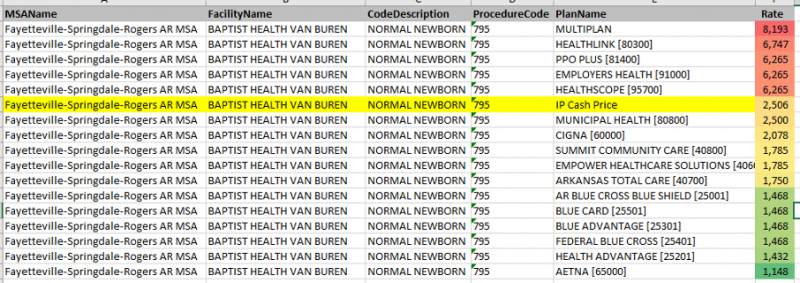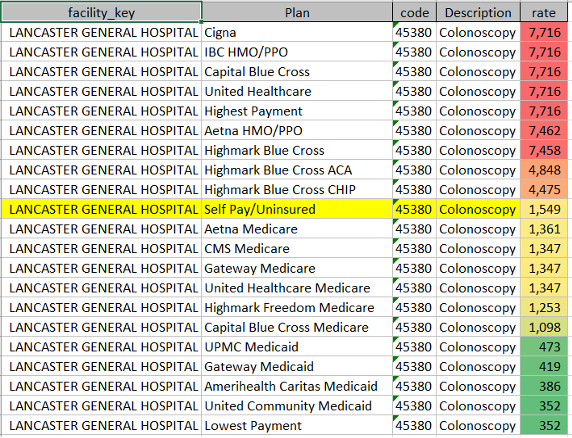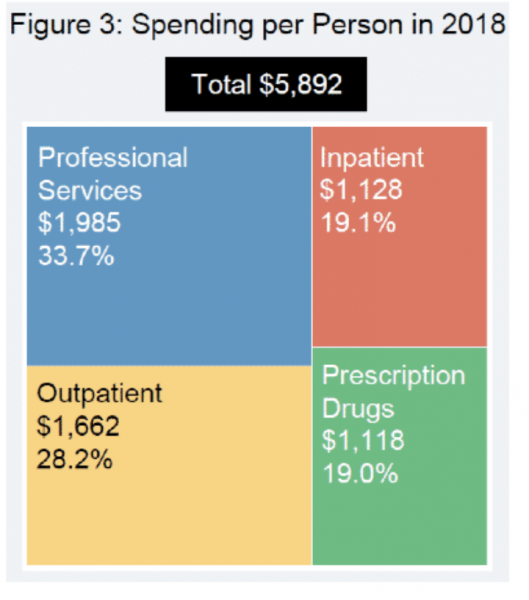- Membership
- The NY Chapter
- Our Career Services
- Committees
- National FACC Network
How to Better “Shop” for Healthcare Treatments
Member news | October 01, 2021
This #MemberInsights article is authored by Care2Care International.

Following up on our introduction to the TiC (Transparency in Coverage ) rules in our previous #MemberInsights Feature, this paper provides practical advice on where and how to find information on hospital prices, and how employers and their workforce can use it to their advantage:
- Hospitalization: The single biggest item of a health plan spend
|
(Source: Health Care Cost Institute)
- Hospital Prices are now available
“In fact, even before the TiC rules, prices were available by simply asking them, thanks to an ACA requirement”, said Leon Wisniewski, founder, and CEO at Healthcostlabs. (https://www.healthcostlabs.com/).
Leon worked a long time for insurers as an actuary. Leon is a strong advocate for affordable and quality healthcare and shares his insights about Data Usage Agreements (DUA’s).
He has built a service providing clients with lower-cost alternatives using millions of rates grouped by MSA Regions, insurers and health plans, hospitals, and services. The data comes straight from hospital files. As of today he has roughly 60% of all hospitals in his database and is constantly updating it.
He does also plan on adding the carriers’ fee schedule files when they become available in January 2022.
Among the different tables Leon shared with us, we chose 3 key examples:
- Different rates negotiated by carriers for normal newborn delivery in Arkansas

As you can see, being enrolled in the “wrong” plan can increase the cost of delivering a baby by a factor of around 7!
- Rates for a colonoscopy in Lancaster General Hospital

Here the price differential is almost incredible: 22 times! Worse: one-third of health plans are billing more for a colonoscopy there than the previous facility would charge for a newborn delivery!
- Rates for a major Hip and Knee joint replacement

This data confirms what we already knew for this type of costly procedure: hospitals charge commercial health plans 2 to 3 times the rate they apply to Medicare-insured clients.
- What employers can/should do with this kind of data
While price discrepancies are not always so wild, the conclusions to draw are straightforward:
It is really worth your time and energy as an employer to negotiate prices, or ask your carrier or broker to do it. Based on actual data, you should be able to build a highly cost-effective network of providers.
“Cash is almost always cheaper than negotiated rates”, Leon could assure us. This speaks in favor of self-insurance…
Employers could also cover 100% of the lowest cost -or any variation along with the same principle- and ask employees to shoulder the difference.
Lastly, employees enrolled in a high deductible plan can really save a lot of money by choosing a low-cost provider.
In conclusion, Leon Wisniewski considers that this data in itself will not change behaviors. It is only if payers use the data, pushing providers to adapt their practice, that a change towards more affordable healthcare will happen.


 Hospital services are generally split into two main types of services: Inpatient and Outpatient. Together they represent nearly 50% of a Healthcare plan spending. Prices are free, set in a document called chargemaster, mostly kept secret. Insurers built networks of hospitals, negotiating rates. Price variations between hospitals are huge, and prices also vary within any given hospital depending on who is the payer.
Hospital services are generally split into two main types of services: Inpatient and Outpatient. Together they represent nearly 50% of a Healthcare plan spending. Prices are free, set in a document called chargemaster, mostly kept secret. Insurers built networks of hospitals, negotiating rates. Price variations between hospitals are huge, and prices also vary within any given hospital depending on who is the payer.